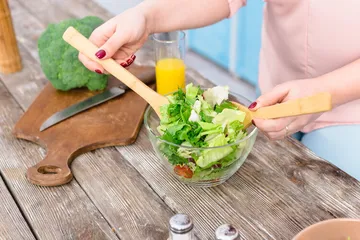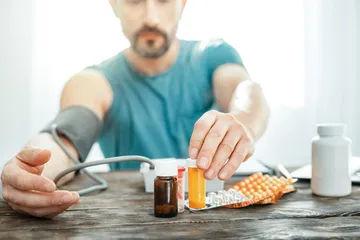Nutrition class for lunch in the canteen
One day, I went to a unit to do business and happened to catch noon. I had buffet lunch in their canteen. Several people followed behind me, watching curiously as I picked up the food one by one and then placed it on my own plates as well. "We want to know how nutrition experts eat it." They said.

"Why did you even take the potato roast beef? I thought you didn't eat meat."
"Why didn't you take the onion cake? How delicious. I didn't take egg fried rice and fried noodles either. Why?"
"If you don't eat the staple food of rice and steamed buns, you can eat steamed yam and purple rice porridge. Can you be full?"
"Why did you take so many stir-fried rapeseed? Can you finish it? Aren't you afraid of pesticides?"
This happens so often, and the result is that my lunch time is turned into a nutrition class.
Then I patiently explained it to them.

--Why didn't you take white rice? In addition to white rice and white flour, there are also various whole grains, brown rice, whole wheat, barley, oats, buckwheat, millet, yellow rice, sorghum, corn, etc., potatoes, yam, taro, sweet potatoes, etc., various mixed beans, red beans, mung beans, kidney beans, lentils, dried peas, dried broad beans, etc., and lotus seeds, coix, gorgon seeds, etc., and other starch-rich ingredients. Now that I have steamed yams, potatoes, and purple rice porridge on this plate, the amount of white rice will be reduced, and I don't even have to eat it. However, there are great benefits to using them instead of white rice. Because yams and potatoes not only contain starch, but also rich potassium that is no less than bananas, and also contain considerable vitamin C and dietary fiber. They are especially beneficial to patients with high blood pressure and gout, and white rice cannot compare with them. Purple rice is rich in antioxidants, and the vitamin and mineral content is two or three times that of white rice. Therefore, using them instead of white rice is nutritionally profitable.
--Why didn't you take the onion cake? Because the scallion cake is made of white flour, a lot of fat and salt. Without enough oil, the cake will not have a crisp and fragrant taste; but because of the addition of oil, the ability to make people gain weight will be improved. In order to avoid getting fat, I try not to eat nutritious staple foods, such as crispy sesame cakes, fried dough sticks, Indian flying cakes, etc., and staple foods that are replenished and sweetened are of course even worse, such as durian crisp, sesame balls, etc. The staple food with salt is not conducive to controlling blood pressure. Isn't the salt in the dish enough?
--Why did you take beef? Because beef can provide me with high-quality protein, B vitamins, and elements such as iron and zinc, especially women before menopause, who suffer menstrual blood loss every month. Eating some red meat in moderation can avoid anemia and be conducive to ruddy complexion. But eating more than a pound of meat a week increases the risk of heart disease and cancer. Only three or four pieces of beef were eaten here, and replaced them with raw meat, which was about 1 liang, which was just in the recommended range of 50-75 grams. Meat is not the devil. Every natural food has benefits, but the amount must be right. Once excessive, good things will turn into bad things.

--Why did you take so much rapeseed? Because rapeseed is the only green leafy vegetable here. You need to eat at least half a catty of vegetables for dinner, including at least half of green leafy greens. If you want to control blood sugar and weight, it is recommended to eat more than 150 grams of green leafy vegetables per meal. Based on the small bowl you eat, it is a bowl of cooked green leafy vegetables. It's not too bad to eat. The benefits of green leafy greens are endless for an hour. It not only prevents diabetes, heart disease, stroke and gout, but also helps prevent osteoporosis and a variety of cancers. By the way, rapeseed is high in calcium and magnesium, rich in vitamin K, and extremely low in oxalic acid. It is a very excellent green leafy vegetable and is particularly beneficial to bone health.
There is so far no evidence at home and abroad that eating too much green vegetables will cause harm due to pesticide residues, but the huge benefits are very certain. Many countries want to promote eating more green leafy vegetables, but suffer from insufficient supply and high prices. China's green leafy vegetables are cheap and cheap in the world. It would be a pity not to eat more!
Many canteens make dishes oily and salty, and they have neither green leafy vegetables nor miscellaneous grains and potatoes. Fortunately, you have a wide variety of ingredients here and less oil and salt. The rest is how to choose wisely!